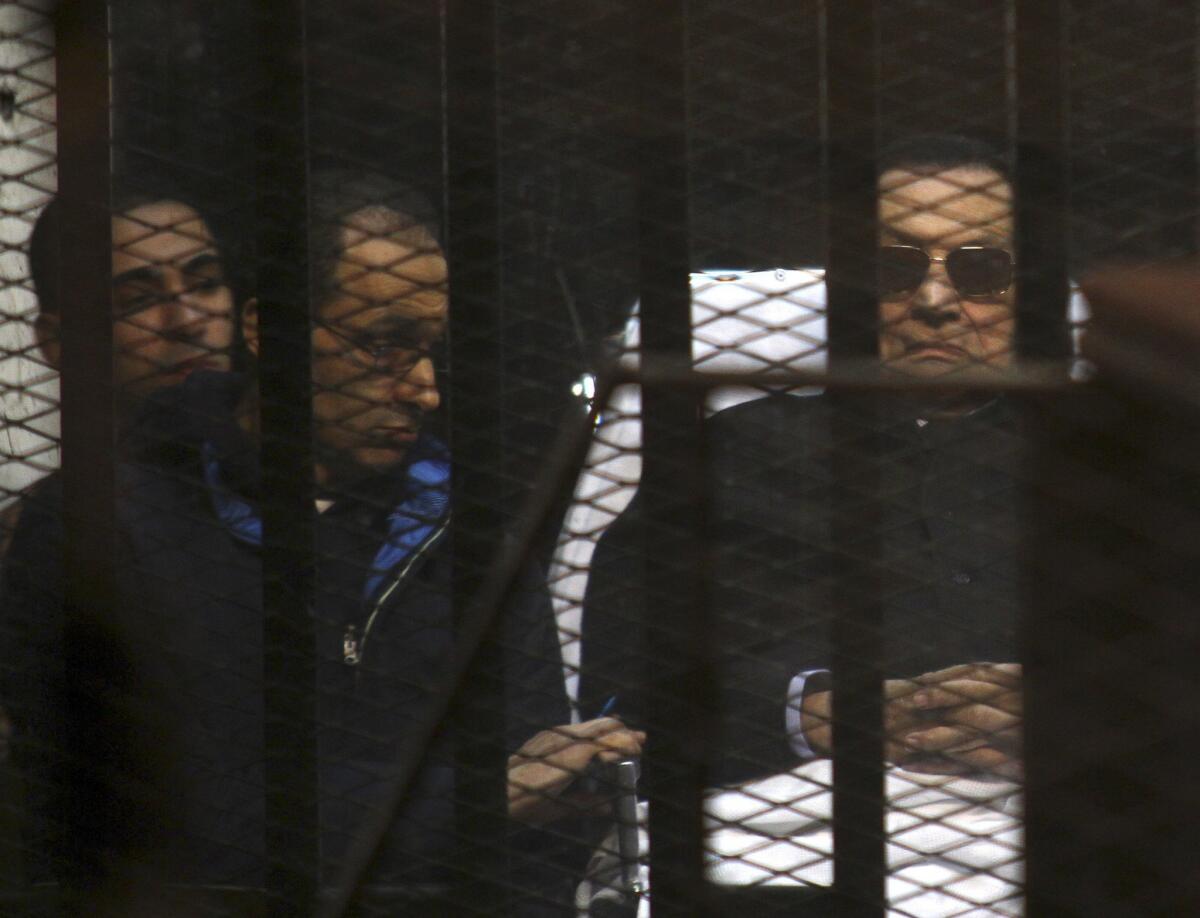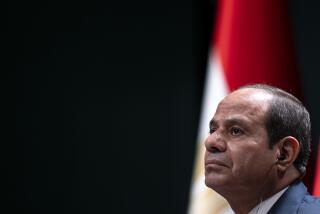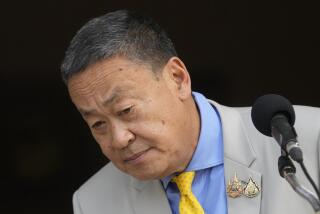Egypt high court ruling could free Mubarak

Egypt’s highest court on Tuesday set aside the sole conviction remaining against former President Hosni Mubarak and ordered a retrial for him on embezzlement charges, setting the stage for the onetime dictator to potentially soon walk free.
The timing of a possible release of the longtime autocrat was left uncertain -- perhaps deliberately so. The Court of Cassation’s order for a new trial raised the possibility that Mubarak would not be freed until that proceeding was formally convened, at which time the charges could be dismissed anew by the lower court.
Even before the high court’s ruling, it was expected that if Mubarak’s conviction had been upheld, he would likely be released soon anyway because his time already served exceeds the three-year sentence handed down on the embezzlement charges.
But Egyptian authorities appeared to be moving cautiously, taking incremental legal steps meant to gauge the likelihood of an outbreak of major unrest when the 86-year-old ex-leader was freed.
The turning point in Mubarak’s legal saga -- which began soon after his 2011 ouster in Egypt’s Arab Spring uprising -- came in November, when charges filed in connection with the deaths of hundreds of demonstrators were dropped. That was the most serious of the pending cases against him.
The ruling brought an outpouring of grief and anger among the “revolutionaries” who spearheaded the drive to oust him four years ago, and sparked some demonstrations, particularly on university campuses and near Tahrir Square, the epicenter of the uprising. But those protests, quickly put down by authorities, were dwarfed by the enormous protests that had driven Mubarak from power.
The former president’s drawn-out courtroom dramas have mirrored the turmoil that has gripped Egypt since his ouster in February 2011. An interim military-led administration gave way the following year to an elected Islamist regime whose popularity plummeted amid inept and autocratic rule by the Muslim Brotherhood’s Mohamed Morsi.
Morsi was toppled in a popularly supported military coup in July 2013, and the then-defense minister, Abdel Fattah Sisi, cemented his power last year in presidential elections he won by a landslide. After years of tumult, many voters embraced the promise of stability held out by the former general, despite a rise in domestic terror attacks and a bloody military confrontation in the Sinai Peninsula between security forces and Islamic militants.
In Mubarak’s initial court appearances, Egyptians were transfixed by the sight of a once all-powerful leader in the caged defendants’ dock, but gradually, through the course of many court sessions, the fascination faded. Mubarak’s apparent health problems fluctuated; sometimes he was wheeled into court stretched out flat on a gurney, seemingly barely responsive, while at other times he was able to sit upright and even address the court. He has spent most of his confinement in a Cairo military hospital.
Under Sisi, the government has enacted a series of authoritarian measures that activists and rights groups say amount to even greater repression than under Mubarak. Freedom of speech and expression has been sharply curtailed, and more than 20,000 people have been jailed or killed in street clashes with security forces.
Twitter: @laurakingLAT
More to Read
Sign up for Essential California
The most important California stories and recommendations in your inbox every morning.
You may occasionally receive promotional content from the Los Angeles Times.










